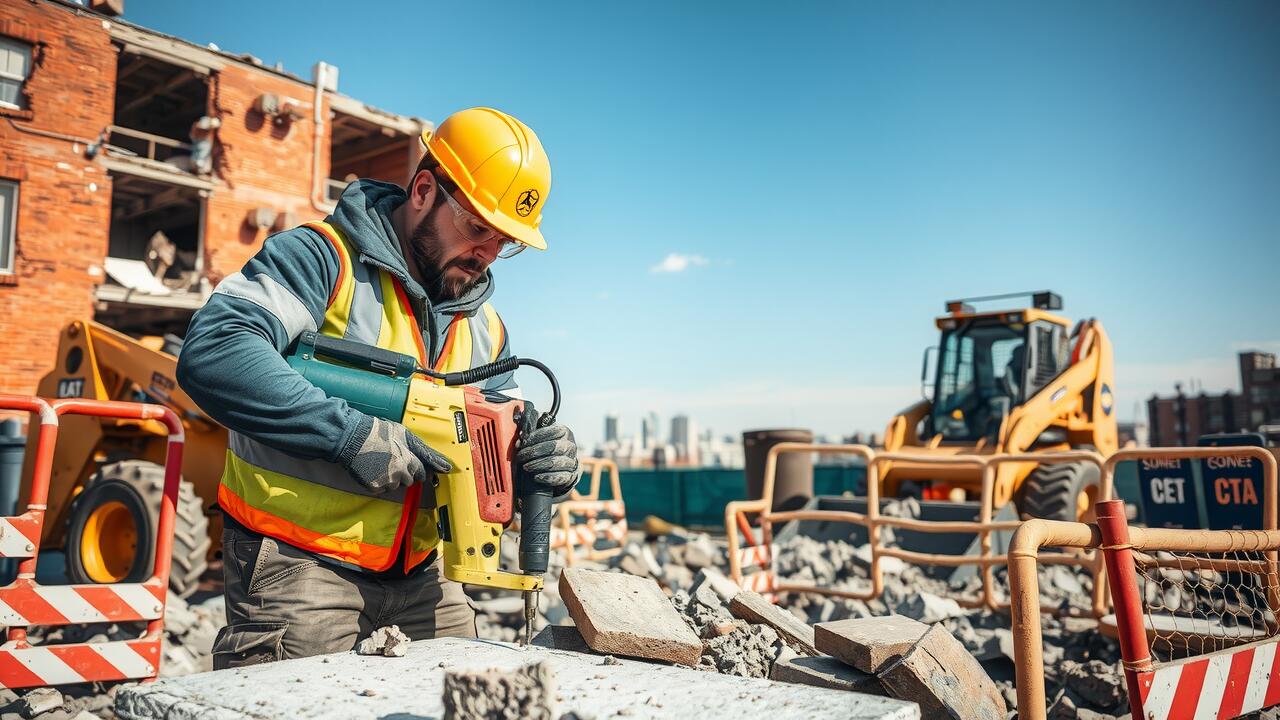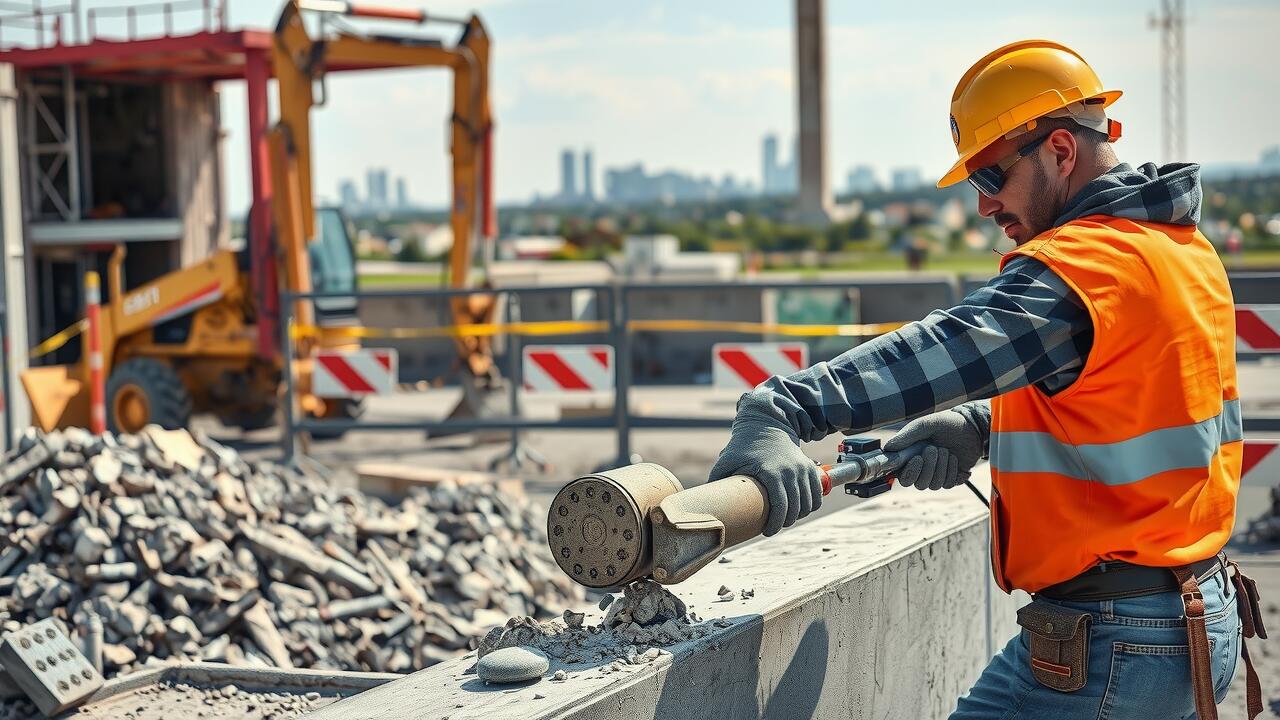
Table Of Contents
Avoiding Structural Damage
Successful concrete demolition requires a thorough understanding of the building’s structural integrity. One common mistake is overlooking load-bearing elements that support the overall framework. Failing to identify these components can lead to unintended collapses or significant damage to adjoining structures. It is essential to assess the entire layout before any demolition work begins, ensuring that the demolition plan accounts for vital structural supports.
Another crucial aspect is the method employed during the demolition process. Using inappropriate techniques can compromise surrounding areas, even if the focus is solely on the concrete itself. Proper cutting and controlled demolition methods help to mitigate risks. Utilizing equipment tailored to the specific site conditions ensures that the surrounding infrastructure remains intact while safely removing concrete. Taking these precautions minimizes the risk of structural damage and enhances the effectiveness of the demolition project.
Identification of Load-Bearing Elements
Identifying load-bearing elements is essential when planning for any concrete demolition project. These elements provide critical support to the structure, and their removal can lead to significant safety hazards. Before any work begins, a thorough assessment of the building should be conducted to pinpoint walls, beams, and columns that play a vital role in maintaining structural integrity. This evaluation often involves consulting with structural engineers or architects who can offer insights into the design and load distribution of the building.
Failing to recognize these key components can result in unintended consequences, including structural collapse. In addition to compromising safety, neglecting to address load-bearing elements can also lead to costly repairs and delays. Proper planning and identification not only streamline the demolition process but also ensure compliance with local building codes. Taking the time to understand the building’s framework can contribute significantly to a safer and more efficient concrete demolition experience.
Timing Your Demolition
Timing plays a crucial role in the success of concrete demolition projects. Choosing the right moment to begin demolition can significantly impact workflow and project efficiency. Weather conditions should be considered to avoid complications, as rain or extreme temperatures may hinder work. Additionally, understanding the schedule of nearby construction activities can prevent delays and help maintain a consistent progress rate.
Scheduling considerations should extend beyond immediate logistics. Planning concrete demolition around community events or peak traffic times can minimize disruptions and maintain good relations with the surrounding neighborhood. Efficient timing not only ensures a smoother operation but also helps in adhering to any local regulations regarding noise and work hours. Proper scheduling can lead to a more orderly process and ultimately contribute to the overall success of the demolition project.
Scheduling Considerations for Efficiency
Efficient scheduling is crucial when planning a concrete demolition project. Proper timing can not only streamline the process but also minimize potential delays. It is wise to consider external factors such as weather conditions and contractor availability. Heavy rainfall or snow can halt progress, leading to increased costs and extended timelines. Additionally, some contractors may have busy seasons, making it important to secure their services in advance to ensure your project stays on track.
Another significant aspect of scheduling involves coordinating with other trades or construction activities. If the demolition is part of a larger renovation or construction project, aligning schedules helps prevent unnecessary interruptions. Involving all stakeholders in the planning stages can foster better collaboration. This approach can lead to smoother transitions between phases, ensuring that concrete demolition is executed efficiently and effectively.
Understanding Local Regulations
Navigating local regulations is critical when undertaking concrete demolition projects. Various jurisdictions have specific building codes and safety standards designed to protect public safety and ensure structural integrity. Before starting any work, it is essential to familiarize yourself with these regulations. Failure to adhere to legal requirements can lead to costly delays or fines. It is often beneficial to consult with local authorities or a legal expert to ensure compliance.
Obtaining the necessary permits is a key step in the concrete demolition process. Permits may vary based on the scope of the project, location, and existing structures. Some regions require notifications to be filed before demolition begins, especially for large or prominent projects. Ignoring these permits can result in complications during the demolition process, including the halt of work by local officials. Being proactive about these requirements can help facilitate a smoother and more efficient demolition experience.
Permits and Legal Requirements
Demolishing concrete structures often involves navigating a complex web of local regulations and legal requirements. Obtaining the necessary permits is crucial to ensure compliance with municipal codes and safety standards. Many jurisdictions require specific approvals before any demolition work can commence. Failing to secure the right permits can lead to fines or legal repercussions, complicating the demolition process.
In addition to permits, it’s essential to be aware of zoning laws and environmental regulations that may impact your concrete demolition project. Some areas have restrictions related to noise, dust control, and debris management. Understanding these requirements helps prevent potential disruptions and ensures the project runs smoothly. It’s advisable to consult local authorities or a professional experienced in demolition to avoid any pitfalls related to legal compliance.
FAQS
What are some common mistakes to avoid when demolishing concrete?
Common mistakes include failing to identify load-bearing elements, not considering the timing of the demolition, and neglecting local regulations and permits.
How can I identify load-bearing elements in a concrete structure?
Load-bearing elements can typically be identified through architectural plans, consulting with a structural engineer, or by examining the design and layout of the building to understand which walls and supports carry weight.
Why is timing important when planning a concrete demolition?
Timing is important to ensure efficiency, minimize disruption to surrounding areas, and to coordinate with utility companies and other contractors that may be involved in the project.
What local regulations should I be aware of when demolishing concrete?
Local regulations may include zoning laws, safety codes, environmental considerations, and noise ordinances, all of which can affect how and when you can demolish a structure.
Do I need a permit to demolish a concrete structure?
Yes, in most cases, you will need a permit to demolish a concrete structure. It’s important to check with your local government or building department to understand the specific requirements for your area.

